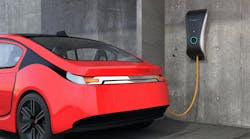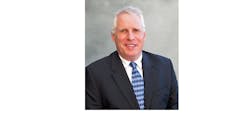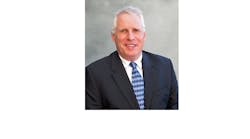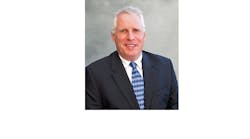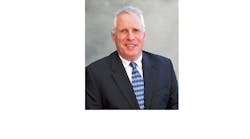Looking for ideas that would be of interest to Electrical Wholesaling's readers, I am always stumbling across interesting little news nuggets as I peruse the Web, several daily newspapers, my overflowing in box and e-mail. Three items recently caught my eye that I would like to pass along to you.
One silly little digit
Buried in a recent New York Times article, “Bigger Bar Code Inches Up on Retailers,” was a morsel that could bring an electrical distributor's bar-coding efforts to a screeching halt. The world is apparently running out of 12-digit bar code numbers. Starting on January 1, 2005, bar codes (including digits, spaces and bars) will go up to 13 digits. According to that article, older bar code readers will freak out and seize up when they try to scan the new bar codes, and possibly cause computers to crash.
Large retailers like Wal-Mart, target and Costco are already on the case, but I am not sure if electrical distributors are yet aware of this problem. If you are wondering if your bar coding system is up to the new codes, check out the Universal Code Council's Web site at www.uc-council.org. The Lawrenceville, N.J.-based association is the “keeper of the codes” and has a wealth of data on this change — as well as a movement already underway to move up to a new 14-digit code.
One of the key benefits of the new code apparently is its small size, and its ability to fit on smaller items, like fresh fruit and vegetables. The extra digit will allow your local supermarket to track data of smaller open lots. In our industry, it would allow distributors to track small items like fittings, wire connectors and such.
New co-op groups gaining ground
A few month's back, EW and its sister publication, Electrical Marketing newsletter, ran an item on Lighting One, a national lighting cooperative for owners of residential lighting showrooms. We were surprised at how many phone calls and e-mails we received from distributors interested in contacting Lighting One. Twenty-three lighting showrooms recently joined the co-op, which helps independent lighting retailers pool purchasing power and gives them access to exclusive products and customized advertising, marketing and training programs.
Jeff Carmichael, Lighting One president and co-founder, expects the 80-member co-op to grow to 600 stores and $1 billion in combined sales within five years. CCA Global Partners, Lighting One's parent company, runs a similar co-op in the carpeting industry, Carpet One, with over 1,400 stores in six countries.
A somewhat related piece of news is that in the bicycle retailing world, a co-op with a similar mission, the one-year-old member-owned YaYa! Bike coop, already has 116 members. In an interesting twist, the bike shops give each other access to each other's bike lines.
Masters of java and branch start-ups
Two interesting items on the coffee front. Dunkin' Donuts, which has blanketed much of the Northeast with its ubiquitous branches, recently announced that it will set up shop in three Home Depot locations so that contractors can grab a cup of coffee and a few donuts while shopping.
To see branch expansion on a grand scale, we don't need to look any farther than Starbucks, which operates 4,479 North American locations and 1,256 overseas coffee shops. The company, which has refined its branch expansion strategy to a science, recently announced that it's now opening three to four stores a day.
It would be tough to keep pace with this expansion. But all distributors can learn from Starbucks' fixation on finding the proper location. In some urban areas, Starbucks has coffee shops across the street from each other, if the traffic patterns are such that customers from adjacent “micromarkets” won't cross a busy street to get to a Starbucks location.
You will always have to focus primarily on the electrical industry. But it makes good business sense to watch the thought leaders in other industries to see which of their ideas you can apply to your own business.
